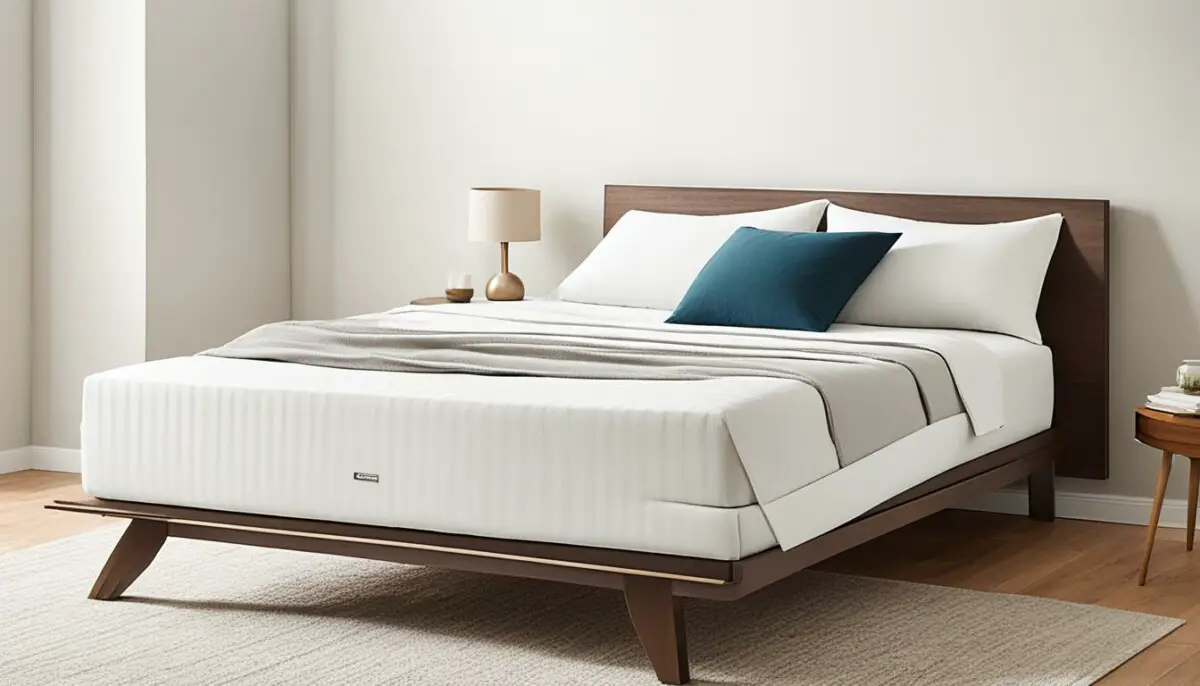Last Updated on 3 months by Francis
If you’re struggling with a lopsided bed and finding it difficult to get a comfortable sleep, don’t worry! There are several tips and solutions that can help you level your sleep space and enhance your overall comfort. In this article, we will explore various strategies to fix a lopsided bed and improve your sleep quality.
Contents
Key Takeaways:
- Addressing a lopsided bed can significantly improve sleep quality and comfort.
- Common causes of a lopsided bed include uneven mattresses, sagging beds, and structural issues.
- Regular mattress inspection and rotation can help minimize the effects of sagging.
- Investing in a quality mattress support system is essential for proper alignment and even weight distribution.
- Consider mattress toppers or pillows as temporary measures to improve sleep comfort.
What Causes a Lopsided Bed?
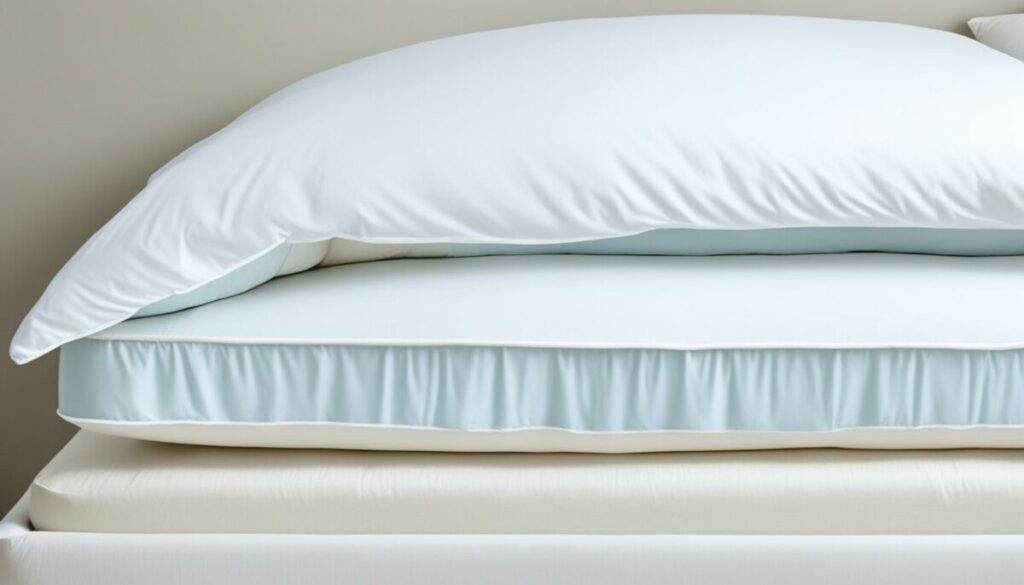
A lopsided bed can be the result of various factors that affect the overall mattress support and alignment. Understanding these causes can help you address the issue and restore a more comfortable sleep environment.
One common cause of a lopsided bed is an uneven or sagging mattress. Over time, the constant pressure exerted by your body can cause the mattress to lose its shape and support. This can result in areas of uneven firmness and discomfort during sleep.
Structural issues such as a faulty foundation or bed frame can also contribute to a lopsided bed. A weak or damaged foundation may no longer provide adequate support, causing the mattress to tilt or sink in certain areas.
Additionally, the age of the mattress can play a role in its lopsidedness. As a mattress gets older, it may start to lose its structural integrity, resulting in sagging and an uneven sleep surface.
“A sagging mattress can lead to uneven support and discomfort during sleep.”
Addressing these issues promptly is essential to prevent further discomfort and ensure a restful sleep. In the next section, we will explore different strategies to fix a lopsided bed and improve your overall sleep quality.
When to Replace Your Mattress
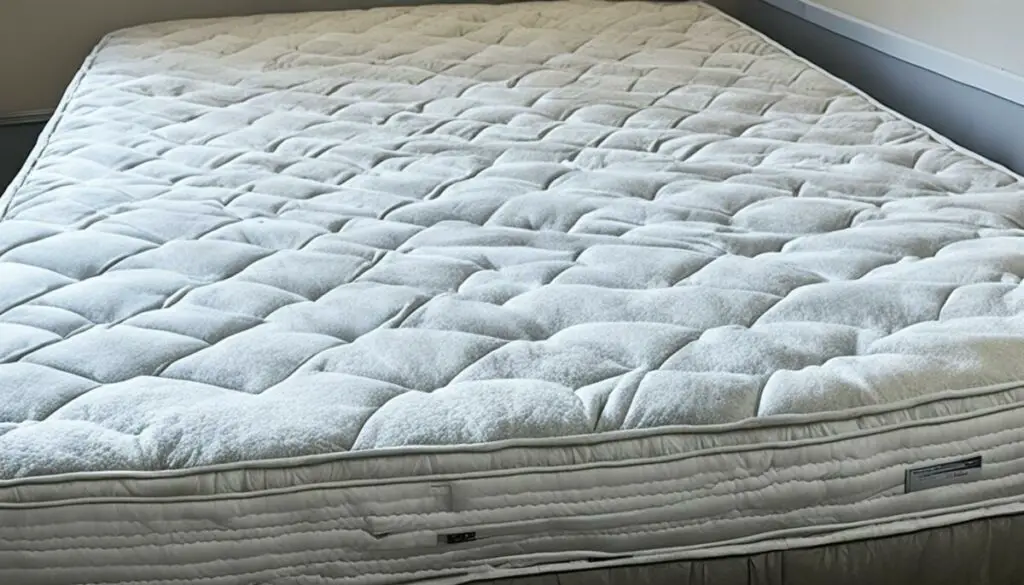
Ensuring a comfortable and restful sleep starts with having a quality mattress. However, mattresses don’t last forever, and over time, they can show signs of wear and tear that affect your sleep quality and comfort. So, how do you know when it’s time to replace your mattress?
If you notice that your mattress is sagging significantly, creating uncomfortable and uneven sleep surfaces, it’s a telltale sign that you might need a new one. A sagging mattress not only compromises your sleep quality but also fails to provide the proper support your body needs for restorative sleep. A lack of support can lead to aches, pains, and stiffness, affecting your overall well-being.
Another indicator that it’s time for a mattress replacement is a noticeable decline in sleep quality. If you find yourself tossing and turning throughout the night or frequently waking up feeling restless and fatigued, it could be due to an old and worn-out mattress. Your sleep environment plays a vital role in ensuring a good night’s rest, and an uncomfortable mattress can significantly impact your sleep quality.
Comfort is key when it comes to mattresses, and if your current one fails to provide the level of comfort you desire, it’s time to consider a replacement. Over time, mattresses lose their cushioning and padding, resulting in a less cozy and inviting sleep surface. If you find yourself constantly adjusting positions to find a comfortable spot or if your mattress feels lumpy and uneven, it’s a clear indication that you need a new mattress for optimal comfort.
While there is no fixed timeframe for mattress replacement, experts recommend considering a new mattress every 6 to 10 years. This range allows for variations in mattress lifespan based on factors such as usage, mattress quality, and individual comfort preferences. Regularly assessing the condition of your mattress and paying attention to the signs of wear and tear will help you determine when it’s time to invest in a replacement.
Remember, a mattress is an investment in your sleep quality and overall well-being. By replacing your mattress at the right time, you can enjoy the benefits of improved comfort, better support, and a rejuvenating night’s sleep.
Strategies to Minimize the Effects of Sagging
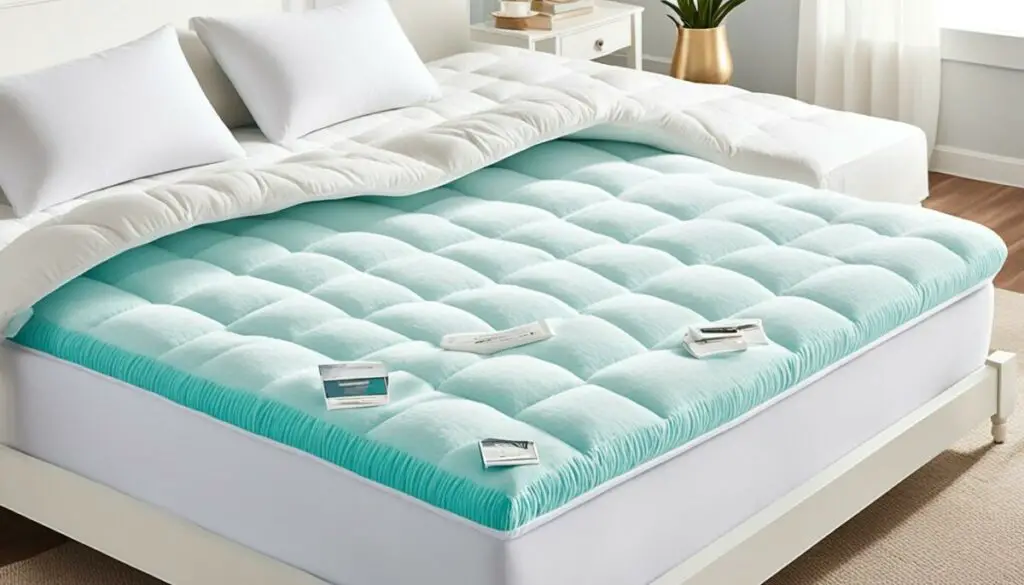
If you’re dealing with a sagging mattress, there are several strategies you can try to minimize its effects and improve your sleep quality.
- Add a Mattress Topper: Consider investing in a high-quality mattress topper. This additional layer of comfort can provide extra cushioning and improve the overall sleep surface. It helps alleviate pressure points and creates a more even sleeping experience.
- Rotate Your Mattress: Regularly rotating your mattress every 3 to 6 months can help prevent premature sagging and maintain more even support across the bed. This simple action distributes the wear and tear more evenly, reducing the progression of sagging over time.
- Choose a Supportive Mattress Foundation: The right mattress foundation plays a crucial role in maintaining mattress integrity and support. Make sure to select a foundation that offers even weight distribution and proper alignment. This helps minimize sagging and enhances overall sleep comfort.
- Use Extra Pillows for Added Support: If certain areas of your mattress are sagging, using extra pillows strategically placed can provide additional support where it’s needed. Experiment with different pillow placements to find the most comfortable sleeping position.
Additionally, checking the manufacturer warranty is worth considering. Some warranties may cover sagging issues and offer repairs or even replacement of the mattress. Be sure to review the warranty terms and conditions to understand your options.
Remember, while these strategies can help minimize the effects of sagging, they may not fully fix the underlying issue. If your mattress is severely sagging and causing persistent discomfort, it may be time to consider replacing it for optimal sleep support and comfort.
| Strategies to Minimize the Effects of Sagging | Highlights |
|---|---|
| Add a Mattress Topper | Extra layer of comfort and cushioning |
| Rotate Your Mattress | Prevent premature sagging |
| Choose a Supportive Mattress Foundation | Even weight distribution, proper alignment |
| Use Extra Pillows for Added Support | Strategically placed for additional comfort |
Importance of Mattress Support
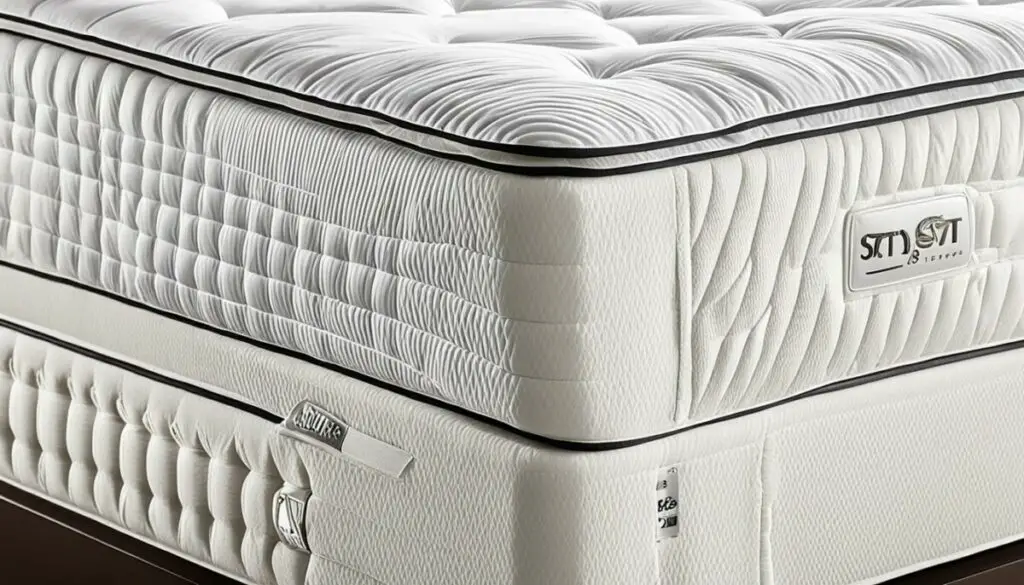
Proper mattress support is crucial for achieving a comfortable sleep. A supportive foundation or bed frame helps distribute the body’s weight evenly and maintains proper alignment of the spine. This ensures that pressure points are relieved and sleep comfort is enhanced. Investing in a quality mattress support system can significantly contribute to minimizing lopsidedness and improving overall sleep quality.
When it comes to sleep comfort, having the right level of mattress support is essential. Without adequate support, you may experience discomfort, restless sleep, and even wake up with aches and pains. Let’s take a closer look at why mattress support is so important:
Even Weight Distribution
One of the key functions of mattress support is to ensure even weight distribution across your body while you sleep. A supportive mattress distributes your weight evenly, preventing any one area from bearing too much pressure. This helps prevent the formation of pressure points, which can lead to discomfort and interrupted sleep.
Proper Alignment
Mattress support plays a crucial role in maintaining proper alignment of your spine. When your mattress is properly supported, your spine remains in a neutral position throughout the night. This alignment allows your muscles and joints to relax, reducing the risk of strain, and promoting a more restful sleep experience.
Enhanced Sleep Comfort
Investing in a quality mattress support system can significantly enhance your sleep comfort. When your body is properly supported, you’re less likely to toss and turn during the night in search of a comfortable position. A supportive mattress helps you relax and sink into a deep, rejuvenating sleep, allowing you to wake up feeling refreshed and energized.
Prevent Lopsidedness
A lopsided bed can lead to discomfort and uneven sleep surfaces. By investing in a mattress support system, you can minimize the risk of lopsidedness and ensure a more balanced sleeping experience. This is especially important if you have a partner sharing the bed, as proper support can help reduce motion transfer and allow both sleepers to rest undisturbed.
In summary, mattress support is a crucial factor in achieving optimal sleep comfort. It promotes even weight distribution, proper alignment of the spine, and enhances overall sleep quality. By investing in a quality mattress support system, you can minimize lopsidedness and enjoy a more restful and rejuvenating sleep experience.
Temporary Measures for Improving Comfort

While a lopsided bed can be bothersome, there are temporary measures you can take to improve your comfort and sleep quality. These solutions can provide relief while you consider more permanent solutions like mattress replacement or repair.
Flipping and Rotating the Mattress
If your mattress is designed for it, flipping or rotating it can help redistribute the weight and alleviate sagging. Flipping refers to turning the mattress over so that the bottom now becomes the top, while rotating involves rotating the mattress 180 degrees. This can be done every few months to promote even wear and prevent excessive sinking in one area.
Pillow Placement for Added Support
Strategic pillow placement can provide additional support to areas of the mattress that are sagging. Consider using extra pillows to prop up these areas and create a more even sleep surface. Experiment with different pillow placements to find the most comfortable and supportive arrangement for your specific needs.
Checking Mattress Warranty
If your mattress is still under warranty, it’s worth checking the details to see if the damage caused by sagging is covered for repairs or replacement. Manufacturers often provide warranties that cover sagging beyond a certain depth, typically determined by the mattress brand. Familiarize yourself with the terms and conditions of your mattress warranty to explore possible remedies for your lopsided bed.
Temporary Measures for Alleviating Lopsided Bed Discomfort
| Temporary Measure | Description |
|---|---|
| Flipping and Rotating the Mattress | Turning the mattress over (flipping) or rotating it 180 degrees can redistribute the weight and even out the sleep surface. |
| Pillow Placement | Adding extra pillows to support the sagging areas of the mattress can provide additional comfort and support. |
| Checking Mattress Warranty | Reviewing the mattress warranty to determine if the damage caused by sagging is covered for repairs or replacement. |
While these temporary measures can improve your comfort, it’s essential to address the underlying issue of a lopsided bed for long-term sleep quality. In the next section, we will discuss the importance of mattress support and how it contributes to a comfortable and evenly balanced sleep surface.
The Role of Mattress Quality
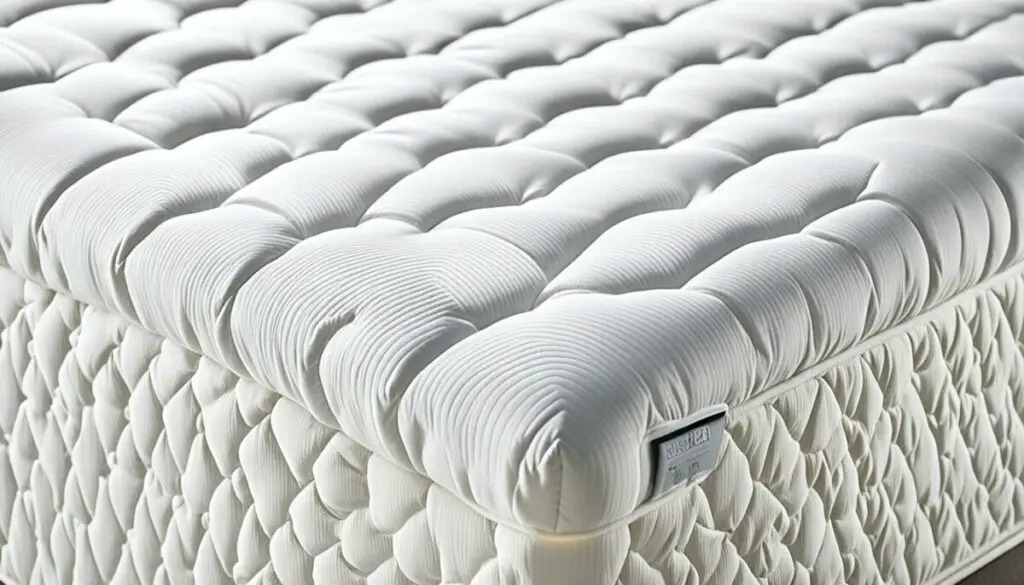
When it comes to the quality of your mattress, it plays a crucial role in providing the comfort and support you need for a good night’s sleep. Choosing a mattress made with high-quality materials is essential for durability and preventing issues like sagging.
Sagging is a common problem that occurs when a mattress loses its shape and support over time. It can lead to an uneven sleep surface and discomfort during sleep. Different types of mattresses have varying levels of susceptibility to sagging.
Memory foam mattresses are known for their contouring properties, providing excellent pressure relief. However, over time, they may soften and lose their firmness, leading to sagging. This can result in a lopsided bed and compromise sleep support. To prevent excessive sagging in memory foam mattresses, opting for higher quality foam materials and denser foams can help maintain their shape and durability.
Innerspring and hybrid mattresses utilize a system of coils for support, with comfort layers on top. While these mattresses offer a bouncy and supportive feel, the coils can lose tension over time, leading to sagging. Additionally, the comfort layers can also soften, further contributing to lopsidedness. Choosing a mattress with high-quality innerspring coils and durable comfort materials can help minimize sagging and ensure better sleep support.
Investing in a high-quality mattress made with durable materials is essential for maintaining proper sleep support and preventing sagging. Look for mattresses with reputable brands that offer warranties, indicating confidence in their product’s quality and longevity. A quality mattress not only provides a more comfortable and supportive sleep surface, but it also helps minimize lopsidedness and improves overall sleep quality.
| Type of Mattress | Susceptibility to Sagging |
|---|---|
| Memory Foam | High |
| Innerspring | Moderate |
| Hybrid | Moderate |
How to Prevent Mattress Sagging
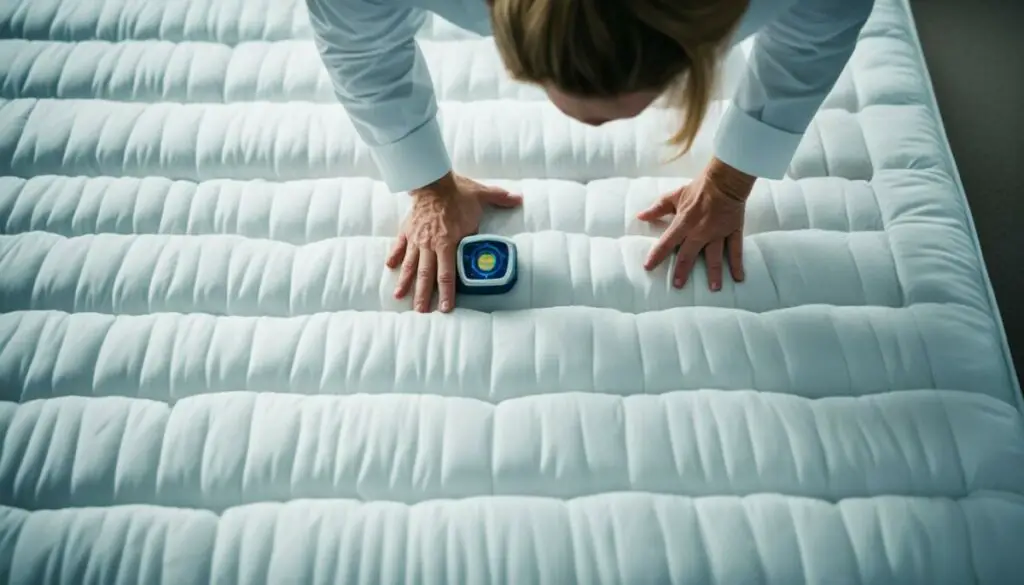
While it’s difficult to prevent mattress sagging entirely, there are some preventive measures you can take to maintain the longevity and integrity of your mattress. By implementing these strategies, you can ensure even wear and prevent the development of uncomfortable lumps and uneven surfaces.
Regular Mattress Inspection
In order to catch and address sagging in its early stages, it’s important to regularly inspect your mattress. Look for any signs of indentations, uneven surfaces, or areas that seem to lack support. By identifying these issues early on, you can take action to correct them before they worsen.
Even Pressure Distribution
To prevent sagging in specific areas of your mattress, it’s essential to distribute your body’s pressure evenly as you sleep. Avoid consistently sleeping in the same position night after night. Instead, try changing up your sleep position occasionally to relieve pressure on specific areas of the mattress. This will help minimize wear and sagging in those areas.
Proper Bed Frame and Mattress Foundation
A sturdy bed frame and a high-quality mattress foundation are crucial components in preventing mattress sagging. Make sure your bed frame is properly aligned and capable of supporting the weight of your mattress. Additionally, invest in a quality mattress foundation that provides adequate support and evenly distributes the weight of the mattress. This will help maintain the integrity of the mattress and prevent premature sagging.
Comparison of Mattress Support Systems
| Support System Type | Description | Benefits |
|---|---|---|
| Platform Bed | A solid surface with evenly spaced slats or a solid panel |
|
| Box Spring | A wooden frame with evenly spaced springs or coils and a fabric cover |
|
| Adjustable Base | A motorized bed frame that allows for customizable positioning |
|
By incorporating these preventive measures into your mattress care routine, you can significantly reduce the risk of mattress sagging and maintain a comfortable sleep surface for years to come.
Benefits of Mattress Toppers
When it comes to improving sleep comfort and dealing with a sagging mattress, mattress toppers can be a game-changer. These soft, cushioned layers provide additional support and comfort to your mattress, giving you a more restful night’s sleep.
Here are some of the key benefits of using mattress toppers:
1. Enhanced Sleep Comfort
With a sagging mattress, you may experience discomfort and uneven sleeping surfaces. Mattress toppers act as an extra layer of cushioning, making your mattress feel more plush and cozy. The additional padding helps to alleviate pressure points, promoting better sleep comfort throughout the night.
2. Minimized Sagging Effects
Sagging mattresses can cause uneven support and discomfort. Mattress toppers provide an extra layer of support, filling in the gaps and contouring to your body’s shape. This can help minimize the effects of a sagging mattress by providing additional support where it’s needed most.
3. Affordable Alternative
Replacing a sagging mattress can be a costly endeavor. Mattress toppers offer a more budget-friendly solution, especially if your mattress is still in relatively good condition. By adding a mattress topper, you can temporarily extend the lifespan of your mattress and enjoy improved comfort without breaking the bank.
4. Customizable Support
Not all mattresses are created equal, and everyone has different sleep preferences. Mattress toppers come in a variety of materials and thicknesses, allowing you to find the perfect level of support and comfort for your needs. Whether you prefer a plush or firmer sleeping surface, there’s a mattress topper that can cater to your specific requirements.
| Benefits of Mattress Toppers |
|---|
| Enhanced Sleep Comfort |
| Minimized Sagging Effects |
| Affordable Alternative |
| Customizable Support |
When to Consider a New Mattress
If the sagging in your bed is severe and causing significant discomfort, it may be time to consider replacing your mattress. Pronounced sagging, decreased sleep quality, and persistent discomfort are all indicators that a new mattress is needed. Investing in a new mattress can provide better support, improve sleep quality, and enhance overall comfort.
When your mattress starts to show signs of pronounced sagging, it can no longer provide the proper support your body needs during sleep. This can result in discomfort and decreased sleep quality, leaving you feeling tired and restless in the morning. A mattress replacement is essential to restore the support and alignment that promotes a restful night’s sleep.
In addition to pronounced sagging, you may also notice a decrease in sleep quality. If you find yourself tossing and turning throughout the night, constantly adjusting your position to find a comfortable spot, it could be a sign that your mattress is no longer providing the necessary support. Poor sleep quality can impact your daily life, leading to fatigue, irritability, and difficulty concentrating.
The discomfort caused by a sagging mattress should not be ignored. It can lead to aches and pains, particularly in your back, neck, and shoulders. This discomfort can disrupt your sleep and make it challenging to find a comfortable sleeping position. Addressing this discomfort by investing in a new mattress can help alleviate pain and allow for a more restful sleep.
Replacing your mattress is a worthwhile investment in your sleep comfort and overall well-being. It can provide the support your body needs, improve the quality of your sleep, and help alleviate the discomfort caused by a sagging mattress.
Here are some signs that indicate it’s time to consider a new mattress:
- Pronounced sagging that affects the overall support and comfort of the mattress
- Decreased sleep quality, characterized by difficulty falling asleep, staying asleep, or waking up feeling tired
- Persistent discomfort, including back pain, neck pain, or sore muscles after waking up
By recognizing these signs and considering a mattress replacement, you can prioritize your sleep health and ensure a restful night’s sleep. Don’t compromise on your comfort and well-being – invest in a new mattress that provides the support and quality sleep you deserve.
| Signs It’s Time for a New Mattress | Benefits of Mattress Replacement |
|---|---|
| Pronounced sagging | Restores proper support and alignment |
| Decreased sleep quality | Improves overall sleep quality |
| Persistent discomfort | Alleviates aches, pains, and discomfort |
Conclusion
Dealing with a lopsided bed can be incredibly frustrating and significantly impact your sleep comfort. However, by implementing the strategies discussed in this article, you can minimize the effects of sagging and improve your overall sleep quality.
Regularly checking your mattress for signs of wear and sagging is crucial in maintaining its longevity and ensuring proper support. Consider using mattress toppers or extra pillows to provide added support and alleviate pressure points. These simple additions can make a noticeable difference in your sleep experience.
Furthermore, knowing when it’s time to replace your mattress is key. If you’re experiencing pronounced sagging, decreased sleep quality, and persistent discomfort, it may be necessary to invest in a new mattress. This will not only enhance your sleep comfort but also provide better support for your body’s needs.
Remember, prioritizing mattress support and staying proactive in addressing lopsidedness can make a significant impact on your sleep quality. By taking these steps, you can create a balanced and comfortable sleep environment that promotes restful nights and rejuvenating mornings.
FAQ
What causes a lopsided bed?
A lopsided bed can be caused by factors such as mattress sagging due to body pressure, structural issues with the foundation or bed frame, and the age of the mattress.
When should I replace my mattress?
It’s time to replace your mattress if it is sagging significantly, causing discomfort during sleep, and if you experience decreased sleep quality and lack of comfort.
What strategies can I use to minimize the effects of sagging?
You can minimize the effects of sagging by adding a mattress topper, regularly rotating the mattress, choosing a supportive mattress foundation, using extra pillows for added support, and checking the manufacturer warranty.
Why is mattress support important?
Mattress support is crucial for achieving a comfortable sleep as it helps distribute the body’s weight evenly, maintains proper alignment of the spine, and relieves pressure points.
What can I do to temporarily improve comfort in a lopsided bed?
As a temporary measure, you can try flipping or rotating the mattress, placing pillows in the areas where the mattress sags, and checking the mattress warranty for repair or replacement options.
What role does mattress quality play in preventing sagging?
The quality of the mattress materials affects its durability and resistance to sagging. Investing in a high-quality mattress made with durable materials can help prevent or minimize lopsidedness and ensure better sleep support.
How can I prevent mattress sagging?
You can prevent mattress sagging by regularly inspecting your mattress for signs of sagging, changing sleeping positions occasionally, using a sturdy bed frame, and investing in a quality mattress foundation that provides adequate support.
What are the benefits of using mattress toppers?
Mattress toppers can provide an additional layer of cushioning and support, alleviate pressure points, and create a more even sleep surface. They can also extend the lifespan of a sagging mattress and provide temporary comfort improvements.
When should I consider getting a new mattress?
If your bed has pronounced sagging, decreased sleep quality, and persistent discomfort, it may be time to consider replacing your mattress. A new mattress can provide better support, improve sleep quality, and enhance overall comfort.
How can I fix my lopsided bed and improve sleep comfort?
By following the strategies mentioned in this article, such as using mattress toppers, rotating the mattress, checking the mattress warranty, and knowing when to replace the mattress, you can minimize the effects of sagging and improve your sleep quality.

